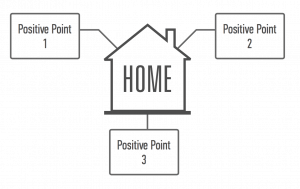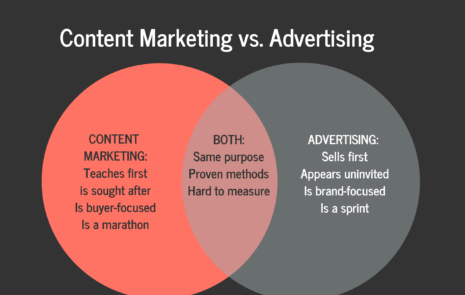
“How do you convey something very complex in content marketing?”
How to make complex content simple
Marketers who work in technology, finance, health care, and science-related fields face a common challenge: how to communicate very complex content and topics.
Here are tips and tricks I learned from 30 years of writing about complex topics in telecom and technology.
Find sources of simplified information.

To unlock understanding, pose simple questions about complex topics. And take great notes.
Pose great questions. Find people outside your company you can ask.
For example, ask a professor or expert to chat with you for 15 minutes over coffee. Make the most of his or her time by developing great questions that enable you to simplify a topic.
Is there a professional association in town where you can strike up the right conversation?
I’ll never forget telling a teacher, “To me, it’s a miracle that airplanes can fly.” To him, it was simple and explainable: “More lift than drag.”
That’s the expert you’re looking for. You’ll find such experts on Quora, which can be a great help to quickly bring you up to speed on a new topic.
Talk to non-expert customers who use your solution.
Customers who don’t understand your technology are great at cutting to the chase. Ask them to explain what outcome they achieved, how it works better than previous methods, and why they’d recommend it to a peer.
For example, when we marketed a filter for molten metal, our engineers talked all about the product’s technical characteristics – resistance to thermal shock, removal of inclusions from metal, and so on.
But customers who use the filter in foundries taught us that only one thing mattered to them – eliminating rework. Rework demands overtime, delays delivery, cuts into profits and strains customer relationships.
To our foundry customers, the technical aspects of our filter were nice to know. But what they needed to know was how to avoid the need for rework. That’s what got them excited.
Search out experts who can explain things in layman’s terms.
The real challenge for an expert is to overcome their curse of knowledge. The curse of knowledge is an inability to explain things in plain words to a layman. It comes from the habit of speaking mostly to others who are knowledgeable in your field.

Whenever possible, interview subject-matter experts face-to-face and:
- Ask them how they’d explain something to their next-door neighbor, to their Mom, or to their kids.
- Prompt them to draw pictures that illuminate what’s going on. These sketches can be refined later.
- Ask them to explain how the product works in a step-by-step fashion. Make a crude map of the process.
Find a children’s book on the topic. As a novice in the engineering and construction field decades ago, I was assigned to write dozens of case histories about bridges. At the time, I didn’t know a truss bridge from a cantilever bridge.
The most valuable resource turned up in the company library: a children’s book on bridges. It explained the basics of each type of bridge – truss, cantilever, suspension, tied-arch, plate-girder – and gave me enough of a foundation to ask the bridge engineers good questions.
That’s how I learned to write case histories about one of my favorite topics, building bridges.
Use techniques that simplify information.
Use pictures to draw out the process, step by step.
Even if you can’t draw, sketch cartoons or a storyboard to visualize the process you need to explain to buyers.
If you can’t draw it, ask your subject-matter expert to draw it. Or use words instead of pictures.

Condense the process down to seven steps or fewer, so it’s simple rather than overwhelming to the audience of buyers.
Avoid over-specialized language, acronyms, and jargon.
To expand your addressable audience, eliminate acronyms and jargon.
Most large business-to-business (B2B) purchases involve a committee with some members who are subject-matter experts (such as IT and operations) and others who are not experts (such as purchasing and finance). Make sure everyone on the committee can understand your message by getting rid of the acronyms and jargon that confuse the non-experts.

Here are 3 questions to help you detect the difference between expert language and layman’s language:
- Should a doctor say that a patient had a myocardial infarction or a heart attack?
- Should an economist say that people are economically disadvantaged or poor?
- Should a politician debate revenue enhancements or higher taxes?
If you must use jargon or acronyms, always explain their meaning on the first use, by placing a definition in your text parenthetically. For example: “He had a myocardial infarction (a heart attack).”
Learn which terms your audience knows and which you need to explain to them. Don’t make people leave the page or presentation to look up a word or acronym … their attention may not come back.
Find the right analogy. Compare what your audience doesn’t know with something they do know that points them to the right idea.
For example, I compare content marketing with gardening. Many tasks that marketers and gardeners do are remarkably similar, and both have the same end in mind – maximizing the yield.
Cut out all the information buyers don’t need. The last time I bought a car, the salesman pointed out they had to go to Ohio to find the color of car I wanted. I couldn’t have cared less about Ohio – I just wanted a blue car.
Never tell buyers the things they don’t need to know.
Boil down the content to one page.
Create a one-page Message Map to boil down the idea to one page.

Use a Message Map to get the gist of your message on one page. The center of your Message Map, or home base, boils down your main idea to a few seconds and answers the audience’s perpetual question: what’s in it for me?
The home base, together with three or four positive points, enables you to explain a complex idea in only 7 seconds, 23 words or less.
For more about how to create your own Message Map, see What Is A Message Map? and Who’s Using Message Maps?
Repeat your message consistently over time.
Repetition makes your message more memorable because consistent messages are stored in your audiences’ place cells, which never run out of capacity. Repetition makes your message more believable too.
The process of repeating your message helps even the most complex ideas sink in with your audience. Over time, buyers will come to understand your idea better and better.
Engage third parties to support your story.
Who tells your story best? Usually, it’s your customers. Customers speak in a way that’s natural and easy for prospects and customers to understand.
That’s why user-generated content cuts through. That’s why reviews on websites are so well-read.
Buyers believe other buyers – more than they believe sellers – as they approach a decision on a new and complex product or solution. Create content to help your buyers hear the words of other buyers.
When you need to convey something very complex in content marketing:
- Find sources of simplified information.
- Use techniques that simplify information.
- Boil down the content to one page.
Enough said.
Related Posts
Top 100 Content Marketing Question: How do you decide the specific platform to deliver content?
3 ways to decide the specific platform to deliver content marketing Use any of these approaches to build a platform to deliver content. Use all...
7 Content Marketing Lessons from Gardeners in Autumn
To every thing there is a season, and a time to every purpose under the heaven: A time to be born, and a time...
Top 100 Content Marketing Question: How can you draw parallels with content marketing and advertising?
Content marketing and advertising are similar, yet different. What do marketers need to know about their similarities and differences? How content marketing and advertising...
Message Maps Outperform Outlines, Scripts and PowerPoint
On stage, one page beats other formats A 1-PageTM Message Map is a simple diagram that helps you deliver your business message even more...






